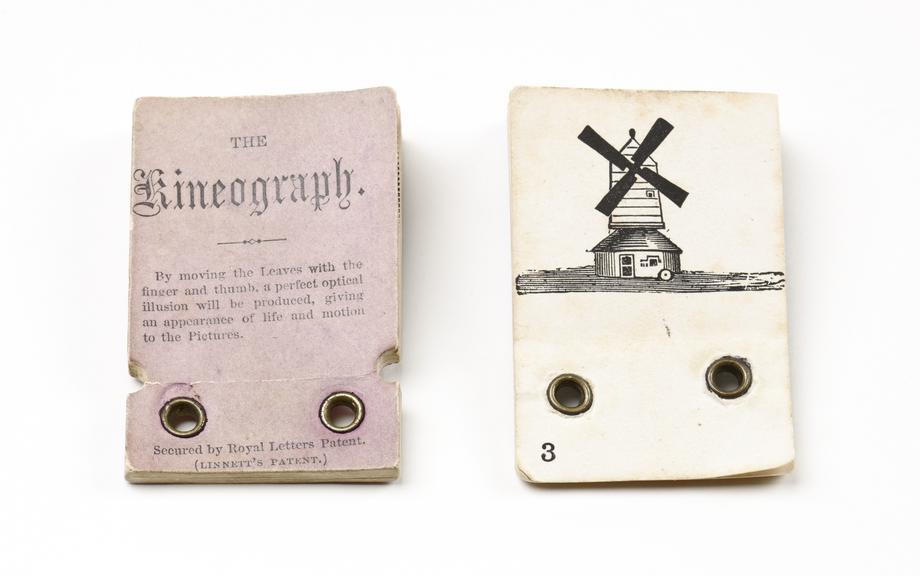Kineograph 'Windmill' Flicker Book
Flicker book windmill; illustration used by John Linnett in original patent application. One of two flicker books, Linnett's patent.
More
A flip book, flipbook,flicker book, or kineograph is a booklet with a series of images that very gradually change from one page to the next, so that when the pages are viewed in quick succession, the images appear to animate by simulating motion or some other change. John Barnes Linnett was a British lithograph printer based in Birmingham, England and was the first to patent the invention, in 1868, under the name of kineograph.
- Measurements:
-
overall: 70 mm x 44 mm x 5 mm,
- Materials:
- paper (fibre product) and brass (copper, zinc alloy)
- Object Number:
- 1990-5036/7213/1
- type:
- flicker book , optical toy and kineograph
- Image ©
- The Board of Trustees of the Science Museum, London



















